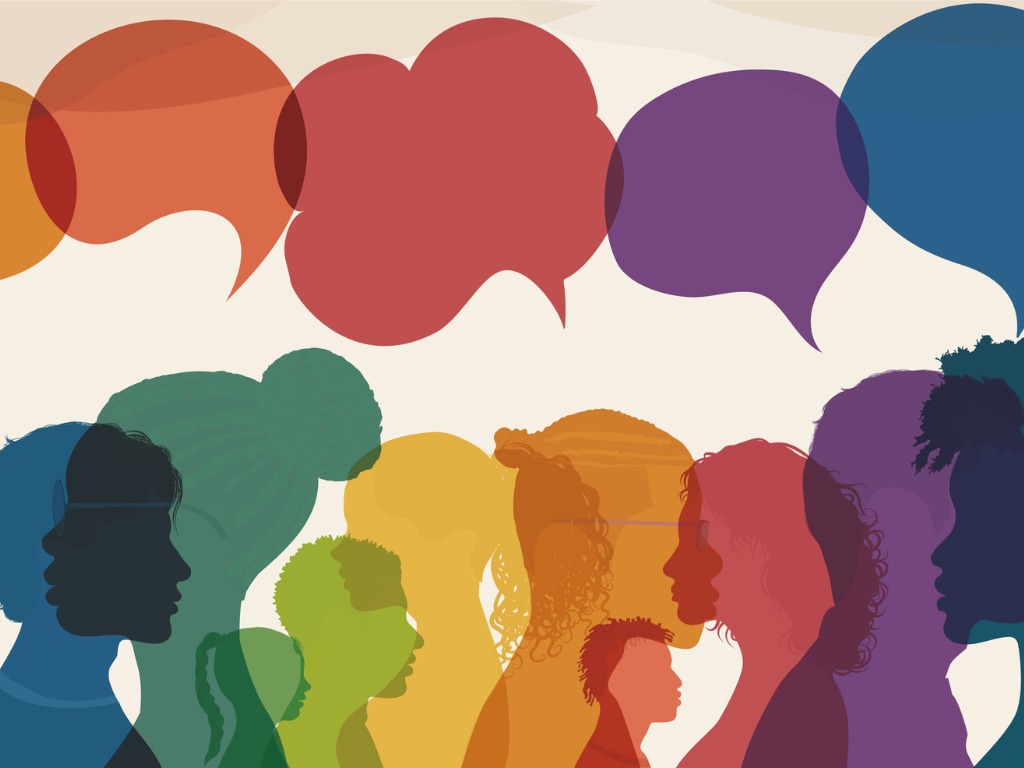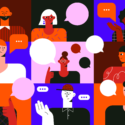
What is intercultural communication and can it bridge the great divide? asks Christy Crump
Intercultural communication is communication between people with differing cultural identities, like those in different age groups, with different religious or political beliefs, or who were raised in different parts of the country or world. To understand intercultural communication, it is helpful to understand cultural identity.
Cultural Identity
Cultural identity is formed when you exist within a social construct that develops how you think and act according to group standards. Members of a group are acculturated in overt ways (members communicate what is expected of you) and less overt ways (you observe member behavior and mimic it). As you acculturate into your cultural identity, so do others around the world into theirs. This equates to different cultural identities with varied intercultural communication.
As business continues to expand across the globe through trade, technology, and social media, fewer people are working and living independently. People must be better connected and interdependent to build relationships and conduct business. People worldwide work together every day, and intercultural communication is a vital piece of working together effectively. When people from different areas of the world come together, it is imperative to understand that other cultures may be different from your own. But this can be difficult.
According to Steven Covey, “Each of us tends to think we see things as they are, that we are objective. But this is not the case. We see the world, not as it is, but as we are – or, as we are conditioned to see it. When we open our mouths to describe what we see, we in effect describe ourselves, our perceptions, and our paradigms. When other people disagree with us, we immediately think something is wrong with them.”
Assuming a group of employees from Germany is exactly like a group of employees from the United States is shortsighted and unfair to both. To understand how people are different from culture group to culture group, you need to understand your own culture group, who you are in that group, how you act in that group, and how you interpret actions and words from others based on your association in that group. Next, you must understand yourself as an individual and how you think and feel about others who may be different from you. Unfortunately, people fall prey to affinity bias, which means they prefer people who are like them, fail to see faults in those who are like them, and are more critical of those who are not like them.
Everyone sorts people into groups and categories that are not logical to others. These connections impact the way you support and encourage others in recruiting, hiring, mentoring, assigning responsibilities, etc. Therefore, you must understand how others differ from you, and what your differences mean in terms of your ability to communicate.
Intercultural Communication
Intercultural communication is important in today’s global community. A good first step towards embracing intercultural communication and the positive impact it can have on a global community is to understand stereotypes, prejudice, and biases.
Stereotypes
Stereotypes are overgeneralized beliefs about a particular category of people. We assume the stereotype is true for each individual person in the category. An example is the category of vegetarians. If you know one vegetarian who wears Birkenstock sandals, and you assume all vegetarians wear Birkenstocks, then you are stereotyping.
Prejudice
According to the Oxford English Dictionary, prejudice is defined as a “preconceived opinion that is not based on reason or actual experience.” An example is when someone says all women are bad drivers. This is a preconceived opinion not based on reason or actual experience.
Bias
Bias is prejudice in favor of or against one person or group compared to another, usually in a way considered to be unfair. An example is when someone says all women are bad drivers, and therefore, men are superior.
Implicit Bias
Implicit bias is the bias you don’t realize you have because it is hidden in your subconscious. Implicit bias bypasses normal, rational, and logical thinking. Everyone has implicit bias, and it shows in your words and actions, but you don’t realize what you are saying or doing or what impact your words or actions have on others.
Implicit bias can be described as a fog you live in. That fog is composed of your family, friends, education, and the media. Each of these influences you during your life. You hear and observe what these influences say and do, and these things stick in your subconscious mind. Then when you are faced with a particular situation, without your realizing it, those influences rise from your subconscious, and you unknowingly say things, act, or react in a certain way that fits what you learned from those influences. In other words, you speak and act without thinking rationally, and afterwards, you may realize that what you said or how you acted was not beneficial for the situation or people involved.
When you understand, confront, and overcome biases, you advance to a level of effective intercultural communication that is beneficial for you and for whomever you are communicating with. Emotional intelligence naturally improves and enables you to be more empathetic to those who may be quite different from you. It causes you to not only hear what someone says to you, but to understand why a situation impacts them the way it does. This leads to greater tolerance for behaviors we may not fully understand.
A good example of this is how people interpret urgency. What seems urgent to you may not seem as urgent to someone in a country where time is valued according to personal needs first and business needs second. Having greater emotional intelligence in your interpersonal communication can diminish misunderstandings and conflict. When you foster an effective intercultural working relationship with people who are different from you, you allow diverse perspectives, ideas, and talents to be brought to the table, which is beneficial to all involved. In addition, when the differences are appreciated and used to everyone’s advantage, you will find that people are more inclusive.
Bridging the Great Divide
Recently, I consulted with a company that needed assistance with their call center, which was staffed primarily with members of Generation Z. The company felt there was a conflict between supervisors and the call center team. In general, the multi-year supervisors had an “old school” mentality. Their priority was productivity and the bottom line. They prided themselves on paying additional money for greater productivity. They insisted employees work from the office and train in live four-hour blocks of time. They issued annual evaluations as the only feedback and enforced a no-cellphone-use policy. The Gen Zs were not motivated by money, were influenced by flex time and telework, needed immediate and frequent feedback, and were quite vocal with “out of the box” ideas for operational improvements and retention of the Gen Z employees.
I brought both groups together for generational awareness and personality assessment training, as well as a brainstorming session. The great divide was bridged. Both groups learned they had something to offer the other, and they were willing to listen and learn from each other. The supervisors realized the Gen Zs were eager to learn not only the job but professionalism skills as well. They appreciated Gen Zs’ ideas for saving time and money and raising employee morale, which raised productivity and profits. The Gen Zs were surprised the supervisors were open to change, if it was instituted in small steps. This business took time and invested money in ensuring two different cultural identity groups had the tools necessary to better understand each other, have empathy for each other, communicate, and work well together. The business benefited in fewer employee complaints, better employee retention, and higher profits.
Conclusion
A harmonious global business community can expand to communities outside the business realm. It can expand to communities that coexist economically, socially, politically, and technologically. As countries’ intercommunication expands and improves, what was once a world where few people communicated across country lines or bodies of water is now a world successful in diplomacy, business, and economics. If we take time to learn about, communicate with, and understand different cultures, then we can become a more understanding and inclusive world that embraces all cultures no matter how similar or different they are from ours. This leads to a more tolerant world with cultures that can work together in a peaceful, cohesive manner for the good of all people rather than compete and battle in a manner that is detrimental to humanity.










